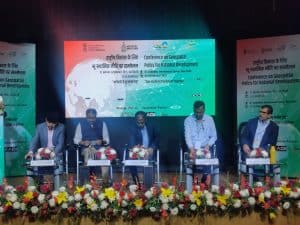It’s a big deal in every possible way. The historic Inflation Reduction Act of 2022 approved by the US Senate last week is, as The Washington Post put it, the biggest burst of spending in U.S. history to tackle global warming.
The package authorizes USD 370 billion in clean energy and climate investments over the next 10 years, with a commitment to cut greenhouse gas emissions to 40 percent below 2005 levels by the end of this decade.
While this includes expansion of solar and wind power generation and making electric vehicles (EVs) viable, the most significant part is mandating oil companies to cut down their greenhouse gas emissions or face penalties. The plan paves the way for investments in innovative technologies such as carbon capture and sequestration, along focus on nature-based solutions and making communities resilient.
More than anything, the billion-dollar commitment from the world’s biggest cumulative carbon emitter at last is expected to signal a historic shift in the energy market. And this alone is a cause for big cheer. The biggest winner of course will be clean and renewable energy. Alongside parallel initiatives in Europe, there could be trillions worth of investments pouring into this vital sector.
However, setting climate targets and policies is just the beginning. Everything from identifying and quantifying the emissions, to real-time monitoring of targets needs cutting-edge technologies.
A McKinsey analysis suggests that for the world to reach net zero by 2050, capital spending on equipment and infrastructure with relatively low emissions intensity would average $6.5 trillion a year. This is more than two-thirds of the USD 9.2 trillion in annual capital spending during that time.
McKinsey has identified 10 “families of climate technologies” that are critical to mitigating carbon emissions, which include: renewables; batteries and energy storage; circular economy; building technologies; industrial process innovation; hydrogen; sustainable fuels; nature-based solutions; carbon removal, capture and storage; and agriculture and food.
In each of these families of climate tech, authentic and accurate data is integral for right planning in the right way, and at the right place. That’s where geospatial technologies come in, and why the geospatial community is central to the whole story.
As David J. Hayes, Special Assistant to the US President for Climate Policy, had underlined, geospatial and mapping technologies are important tools for the US administration in its battle against climate change.
Never before has an agenda been more crucial for the whole world. Never before has the power of “where” been more critical in addressing that agenda!
Disclaimer: Views Expressed are Author's Own. Geospatial World May or May Not Endorse it









